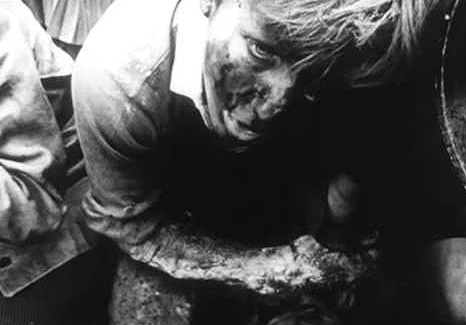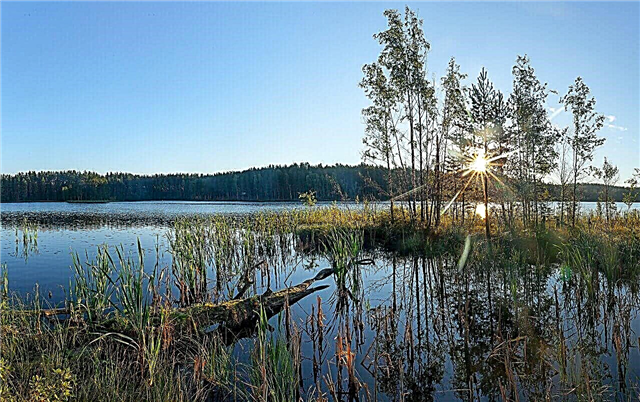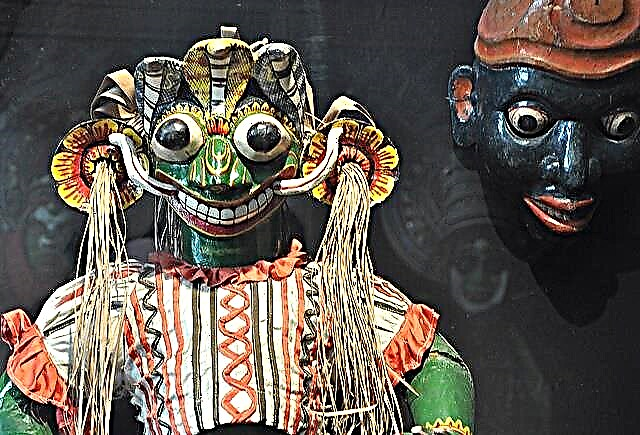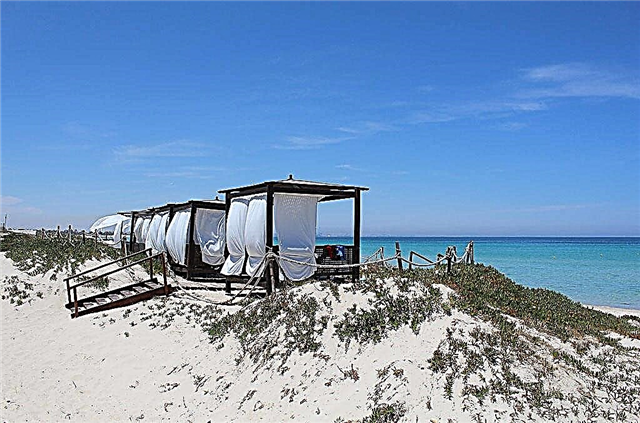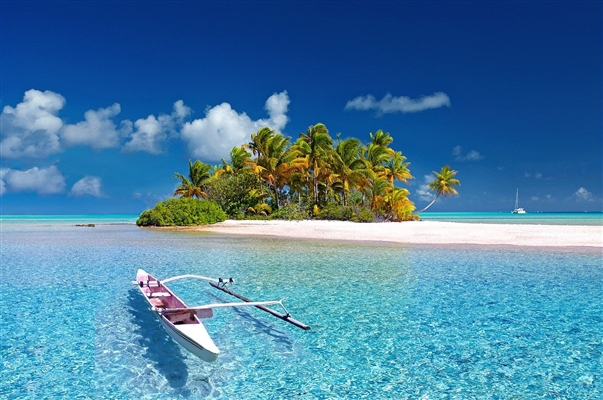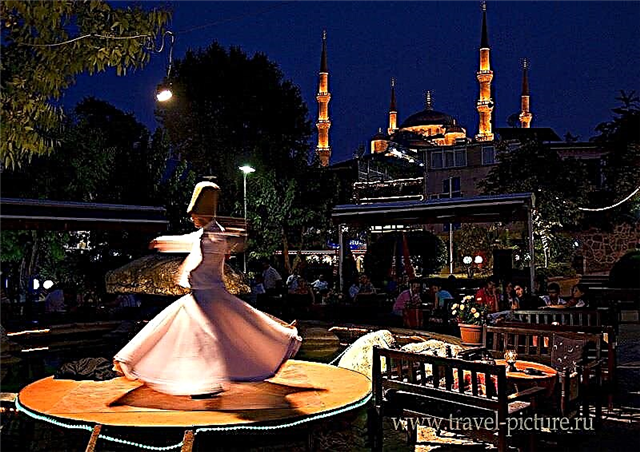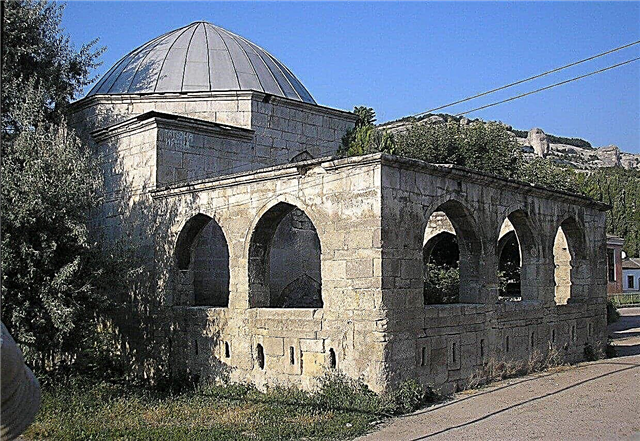Despite its location far from the sea, Bakhchisaray is a popular city among travelers. The reason for its popularity among tourists is the centuries-old history of the city, preserved monuments of architecture and culture. The main point of attraction for guests of the city is the Khan's Palace. On its territory there are many buildings from the times of the Crimean Khans - the Harem Building, the Great Khan's Mosque, the Fountain of Tears and the Golden Fountain.
In the vicinity of Bakhchisarai, the most interesting are cave cities, fortresses and monasteries, many of which were built in the 5th-6th centuries. Each of them is interesting and unique in its own way. During their construction, both natural caves and grottoes were used, and artificial ones were laid in a rocky monolith. Many of them are located at the tops of the mountains, from which plateaus are incredibly picturesque.
The most interesting and beautiful places
List, photos with names and descriptions of the best sights of Bakhchisarai. He will help you plan routes and choose excursions to explore the top places of the city and its environs in 2-3 days.
Khan's palace
It is considered the main attraction of the city. The former residence of the Crimean khans, built in the classical style of Ottoman architecture. Most of the buildings in the palace were built in the 16th century. On the territory of the residence there are about 20 objects - palaces, towers, a building for a harem, a bathhouse, a mosque and a fountain. Now it is a grandiose museum complex; ethnographic and historical exhibitions are exhibited in the former khan's buildings.

Don't miss: 20 of the best palaces in Crimea.
Park "Crimea in miniature in the palm of your hand"
Occupies an area of 2.5 hectares. The park is located next to the Khan Palace. It presents more than 70 copies of the sights of different cities of the Crimean peninsula on a scale of 1:25. There are models of palaces, temples, estates, castles, fortresses, museums. The exhibits are made of plastic and have a complex design of up to 2000 parts. A team of artists, designers, architects worked on each miniature.

Museum complex "Devlet-Saray"
The museum is located on the territory of the disappeared village of Staroselye on the outskirts of Bakhchisarai. The museum includes the objects of the palace, from which the construction of the city began. A mausoleum is available for inspection, in which 18 members from the Gerai dynasty are buried. Nearby are the ruins of a 15th century mosque and the building of a higher educational institution of the Khan times. The Larishes exhibition on the territory of the museum exhibits about 1,500 items of the XIII-XX centuries.

The fortress city of Chufut-Kale
A walled city located in a cave. Located 2.5 km from Bakhchisarai. The historical object was built by the peoples who previously lived on the territory of Bakhchisarai - Alans, Karaites, Kypchaks. It is believed that the underground city was founded in the 5th century. A visit to the "dead city" is one of the most popular excursions in Crimea. Organized excursion groups from Evpatoria, Yalta, Sevastopol are brought here.

Tik-Kuyu well
The siege well of the Chufut-Kale cave fortress is a unique medieval hydraulic structure. The mouth of the siege well is located a few dozen meters from the South Gate of the fortress. From here, an underground gallery with a slope of 22 ° and a length of 120 meters is stretched into the city-fortress itself. At the bottom there is a platform with two basins-fonts and an altar. The walls of the gallery are overgrown with stalactites.

Tomb "Eski-Dyurba"
It is often called the most mysterious place of Bakhchisarai. The mausoleum consists of 10 dyurbe burials of ancient rulers. The construction of the tomb dates back to the 15th century, but some scholars call it the 13th century as the foundation date. For that time, the tomb has incredibly clear and monumental features, a lot of elaborate details - decoration of platbands and cornices. The monument of history and culture is located 200 meters from the Khan's Palace.

Sphinxes Churuk-Su
Stone pillars, created by nature itself, are located in the valley of the Churuk-Su river. There were underground springs in the valley of the once full-flowing river. For several hundred years, the forces of water and wind have turned part of the limestone slopes into bizarre figures. The hiking trail to the Sphinxes starts from the Khan's Palace. The slabs with stone sculptures are located on a slope; care should be taken when climbing up to them.

Farm "Miracle donkey"
The donkey farm is located near the village of Zalesnoye. In addition to donkeys, you can see horses, ornamental chickens and Vietnamese pigs on it. The donkeys of the farm have different origins - from Central Asia and Africa. There is a museum at the farm that tells about the almost two thousand-year tradition of using donkeys as draft power. On donkeys, they organize excursions around the surroundings, conduct donkey milk tasting.

Karaite cemetery "Balta Tiimez"
A popular place among tourists, 10 km from the city near the cave city of Chufut-Kale. From the underground fortress to the necropolis in the middle of the oak grove, there is a road among the rocks about a kilometer long. The Karaite cemetery is free to visit. On its territory of 4 hectares there are several thousand graves with sacral signs and epitaphs in the Karaite language, inscribed on stone tombstones.

Crimean Astrophysical Observatory
Located at an altitude of 600 meters above sea level near the Crimean nature reserve, 12 km from Bakhchisarai. It is believed to be the largest space exploration facility in Crimea. The territory of the observatory is a small working village on the slope of the Sel-Bukhra mountain. Guided tours are organized around the observatory. In the evening, through the telescopes of the observatory, visitors can study celestial bodies.

Sights of the Khan's Palace
The most popular attraction of Bakhchisarai is the Khan's Palace. It is interesting to walk on its territory and see historical objects: fountains, mosques, rooms.
Great Khan Mosque
It is located on the Palace Square. The mosque was built by the Crimean Khan Sahib I Geray in 1532. It is a massive building with a pointed arcade. The walls of the mosque are decorated with majolica inserts and quotes from the Koran in Arabic. Two ten-sided minarets are finished with peaked roofs. They are built of stone slabs and held together with lead inserts. The mosque is operational and open to believers.

Fountain of tears
A classic-looking fountain with several bowls is included in the main excursion program of the Khan's Palace. It was created in 1794 by a master from Iran, Omer. The famous opera and ballet are dedicated to the beautiful fountain; Pushkin wrote a poem about it. A bust of the poet is installed next to the fountain. The marble fountain is decorated with floral ornaments. The hole from which the water flows looks like a lotus flower.

Harem building
Consisted of four buildings around a lush garden. To date, only the outbuilding has survived. It was built in 1736 after a big fire. However, older decorative elements were used in its decoration. A carved wooden portal from the 16th century and a stained-glass window in the room of the chief eunuch of the same period have survived. Baroque ornament, marbled painting and Arabic inscriptions on the ceiling have been preserved since the 18th century.

Golden fountain
The bowl of the fountain is made of expensive marble and covered with gilded ornaments in the Turkish Baroque style. The carving of the ornament is a symbol of the Garden of Eden - vines, flowers, fruits are carved. The fountain was built in 1733 and was previously used for the ritual of ablution before prayers. The fountain is located at the entrance to the small Khan mosque. The obverse slab of the fountain is decorated with lines from the Koran, engraved in Arabic script.

Khan cemetery
Located near the Khan's mosque.9 Crimean khans, 45 family members of the khan dynasty and courtiers who were awarded this high honor were buried there. Two mausoleums were built - on the southern and northern sides of the cemetery. A rotunda was erected where the remains of Mengli II Gerei are buried. Inside the buildings, as well as on the paths, there are marble and limestone tombstones. The gravestones are decorated with exquisite carvings with symbols of eternal life.

Iconic mosques of Bakhchisarai
The old mosque Ismi Khan Jami is interesting as a monument of history and architecture, it requires restoration and restoration. Takhtali-Jami is located in the old city, it is used for its intended purpose.
Ismi Khan Jami Mosque
The small mosque was built in the 16th-18th centuries. Funds for its construction were donated by one of the nieces of the Crimean khan Ismi Khan, after whom the mosque was named. The mosque has a rectangular shape in a simple classical architectural style with baroque elements. Stars of David are made of wooden battens above large round windows. The material from which the mosque was built is Crimean stone.

Tahtali-Jami Mosque
Located near the Khan's palace in the old part of the city. The Churuk-Su river flows near the mosque. The construction of the mosque was completed in 1707 at the initiative of Princess Bekkhan Sultanhani. The name of the mosque means "made of wood", but only its frame is made of wood, which is lined with stones on both sides. The mosque is active - tourists should remember that it is prohibited to enter it in shoes and open clothes.

Orthodox monasteries and temples of Bakhchisarai
In the vicinity of the city in the gorge of St. Mary there is one of the places of pilgrimage in Bakhchisarai - the Assumption Anastasievsky Monastery. Also interesting is the Skete of St. Anastasia with the Beaded Temple.
Assumption Anastasievsky Monastery
It is surrounded by high cliffs of the St. Mary's Gorge. The current male monastery was founded in the 8th century. It is believed that it was built by monks from Byzantium, to whom the inaccessible hundred-meter-high cliffs covered with greenery resembled their native lands. Nicholas I, Alexander I and Alexander II visited the picturesque church, where saints and relics valuable for believers are kept. The most beautiful building of the monastery is the Assumption Church.

Holy Annunciation Monastery on Mangup
The male monastery on Mount Mangup is located 25 km from Bakhchisarai. It is believed that it was founded in the XIV-XV centuries, but was abandoned for several hundred years. The buildings of the monastery are located at a natural grotto on a hill, from which the landscapes around are clearly visible. One of the active churches is located almost on a cliff. In several cave rooms of the monastery, ancient, centuries-old frescoes have been preserved.

Skete of St. Anastasia
Another religious complex located in the caves of the mountains. The skete is located near the villages of Bashtanovka and Preduschelnoe. The main temple of the monastery is called the Beaded Temple - it is famous for its unusual decoration with beads. The monks used beads to create panels of various sizes. Beaded compositions decorated the walls and vaults of the church instead of the usual painting, which did not last for a long time due to high humidity.

Church of the Feodorovskaya Icon of the Mother of God
Located next to the train station. The church is a little over 100 years old; it was consecrated in honor of the royal family of the Romanovs. For the construction of the church, donations were collected from the townspeople, many patrons contributed rather large sums. Later, again at the expense of the townspeople, the church was restored after the destruction of the Soviet regime. One of the domes was converted into a belfry, the walls were painted by artists from St. Petersburg.

Chelter Koba cave monastery
Monastery one kilometer from the village of Bolshoye Sadovoe. The monastery includes the main cave temple, a refectory and cells, between which paths cut in the rocks are laid. In total, there are about 50 caves in the rocky monolith in several tiers, which are used for the needs of the monastery. The altar of the main temple is located in a deep natural grotto. The estimated date of the foundation of the monastery is the XIII-XIV century.

Cave cities and fortresses of Bakhchisarai
The outskirts of Bakhchisarai attract tourists with numerous cave towns and the remains of medieval mountain fortresses.
Eski-Kermen walled city
The medieval cave city is located 14 km from Bakhchisarai near the village of Krasny Mak. Historians do not have documentary evidence of the date of its foundation, but archeology determines the 6th century as the period of its foundation. The fortress city, erected by Byzantine monks, was destroyed by the Tatar-Mongols. Now Eski-Kermen is the second most popular cave city among tourists.

Fortress city Tepe-Kermen
An ancient fortress, founded in rocky caves, is located in the mountains above the Kacha River, 7 km from Bakhchisarai. The fortification was founded in the 5th-6th centuries. In the XII-XIII centuries, the fortress began to grow, many residential buildings appeared in it. For some time, Jews and Karaites lived in the settlement, and a monastery worked. You can visit the city on the mountain both independently and as part of an excursion group.

The fortress city of Mangup
The medieval city, formerly called Doros, once had the status of the capital of the Crimean Gothic, then became a Turkish fortress. It is built on a mountain 250 meters high. Mangup is similar in its way to other cave cities-fortresses, but its area is much smaller - the territory of the plateau on which Mangup is located is 90 hectares. The plateau is surrounded by massive ledges and steep steep ravines.

Ancient settlement Kyz-Kermen
Many above-ground buildings have survived in good condition. From the edge of the sheer cliff where they are built, stunning views open up. The settlement is located 12 km from Bakhchisarai near the village of Mashino. Presumably, the first buildings on this territory appeared several hundred years before our era. The area where the settlement is located is a real natural fortress, surrounded by inaccessible rocks.

Backla cave city
It is located in one of the Crimean mountain tracts, two kilometers from the village of Skalistoye. The archaeological complex consists of 200 caves, which have been studied by scientists for over 100 years, finding unique artifacts. Tourists will see here the ruins of defensive cave structures, rooms for utility and residential purposes. Some of the caves were used as wineries and barns. The city was founded in the 3rd century BC. Turks, Alans, Goths, Byzantines lived in it.

Suyren Fortress
An interesting monument of the medieval fortification architecture of the Crimea. The fortress was built on the banks of the Belbek River near the village of Maloe Sadovoe. Historians do not have an exact date for the foundation of the fortress. According to various versions, the beginning of its construction is attributed to a fairly wide period from the 6th to the 12th century. The fortress has survived well enough. Its structures were erected from massive and strong rubble stone.

Cave monastery Kachi-Kalion
The monastery is located among rocks over 100 meters high in the valley of the Kacha River. Not far from it is the Skete of Anastasia the Patterner. The protrusion of a large rock resembles the bow of a ship, and the name of the monastery is translated as "cruciform ship". The rooms of the monastery are located in 4 underground caves. The ruins of defensive buildings, an old cemetery, the remains of a wine press and the Church of St. Sophia, built in the VIII-XIX centuries, have been preserved.

Interesting museums of Bakhchisarai
There are not many museums in the city, there are two institutions that you can visit. This is a museum that recreates the atmosphere of life and life of the Crimean Tatars. And the museum of the writer and social activist Gasprinsky.
House-Museum "Dervish Evi"
The museum is dedicated to the life and culture of the Crimean Tatars that existed centuries ago. It is located in an old Crimean house near the Khan's palace. The founder of the museum was Rustam Dervish, who meticulously recreated the old interior and furnishings in the house. There are a lot of antiques, handicrafts - a fireplace, carpets, jugs, dishes. It is planned to create a workshop and a home coffee shop at the museum.

House-Museum of Ismail Gasprinsky
The expositions of the museum are devoted to the life and work of the writer and social activist Ismail Gasprinsky. He was the founder of the Bakhchisarai newspaper "Terjiman", which was published for 35 years from 1883 to 1918. The museum was opened in the building of the printing house in 1921, but from 1932 to 2001 it did not work. The museum's collections have preserved personal photos of the publisher, his books, awards, documents. The atmosphere of the study has been recreated.

Monuments and monuments of Bakhchisarai
Historical and modern monuments and monuments of the city.
Catherine mile
A set of road signs installed at the end of the 18th century on the way of the proposed route of Catherine the Great to the Crimea from St. Petersburg. Both milestones and special "miles" were installed every 10 miles. To date, only 8 Catherine miles have survived, one of which is located in Bakhchisarai not far from the Khan's palace. It is a cone-shaped column on a square plinth.

Monument to A.S. Pushkin
Located on Lenin Street near the Khan's Palace, in the courtyard of which there is a fountain, to which the poet dedicated one of his outstanding poems. The 5-meter-high monument was erected in 1999. It was also opened on June 6, the day of the 200th anniversary of the poet. Famous Moscow masters - Gnezdilovs, Konstantinov, Borisova - worked on the sculpture. The poet is carved in bronze. He looks into the distance, holding a volume of poetry in his hand.

Monument to the partisans
A high obelisk was erected in memory of the perished partisans who valiantly fought during the Great Patriotic War. The partisan detachments included workers, collective farmers, Komsomol members and party officials. During the existence of the detachment, several fascist garrisons were defeated, about 600 German soldiers were killed, 2 enemy echelons and several dozen vehicles were destroyed, 2 bridges were blown up.

Monument to I.M. Gasprinsky
The monument to the famous Crimean educator is located on Lenin Street near the miniature park. The bust of Gasprinsky is installed on a high rectangular pedestal. The dates of the life of the national leader are engraved on the pedestal - 1851-1914. For the installation of the monument, a small courtyard was equipped with green spaces, surrounded by a brick wall, painted white. Gasprinsky was buried in Bakhchisarai in Zyndzhirli Madrasah.

Memorial "Eternal Flame"
Installed at the Bratsk cemetery to celebrate the 70th anniversary of the victory in the Great Patriotic War. The bowl of the Eternal Flame is made in the form of a five-pointed star. A Soviet battle tank, which took part in the military operation to liberate Crimea in 1944, stands on a pedestal near the Eternal Flame. About 500 soldiers who died during the battles for the liberation of the city from the Nazi invaders are buried in the Mass Grave.

Natural attractions of Bakhchisarai
The absence of the sea coast does not make Bakhchisarai deprived of natural beauty. There are mountains and waterfalls, canyons with lakes and even lavender fields.
Lavender fields in Turgenevka
The flowering fields near the village of Turgenevka are compared by many to French Provence - and all because of the magnificent lavender, which densely covers a vast territory of several kilometers. Despite the fact that lavender blooms for several months, June and July are considered the best periods to visit the fields. It is during these months that lavender has its most intense color. This is a favorite place for romantic photo shoots.

Sphinxes of the Caralez Valley
Natural masterpieces that attract tourists with their unusual shape. The original statues are located near the village of Zarechnoye. The mountain slopes in these places are mostly limestone, they are exposed to the effects of wind and water, which methodically over hundreds of years have created bizarre figures on the rocks, outlines similar to mythical sphinxes. In total, 14 rocks of varying degrees of accessibility were formed on the slopes of the valley.

Suatkan waterfall
Formed by the river of the same name with a length of only 11 km. Located 35 km in the Balbek Valley, 5 km from the village of Bogatoe Uchelye. The road to the waterfall leads through a forest area. The beautiful waterfall is formed by the fall of water from a ledge 12 meters high. This is a truly enchanting sight - pure jets of water in harmony with pristine nature. The most full-flowing waterfall is in spring, when the ice melts.

Don't Miss: Top 20 Crimean Waterfalls
Silver Streams waterfall
The picturesque waterfall is located 35 km from Bakhchisarai in the Small Canyon near the village of Sokolinoe. Not so long ago, the territory near the waterfall was landscaped, it became easier for tourists to get to it and admire the masterpiece of nature. The water of the waterfall falls in several streams from a 6-meter ledge, overgrown with a thick layer of moss. The walking route from the forestry cordon will take a little time. An observation deck is equipped.

Martian (Marmara) lake
The small lake is known under two original names - Martian or Marble. The landscape around is reminiscent of the Martian - rocks with practically no green vegetation. The size of the reservoir is 430 * 190 meters, its depth is 10 meters. The lake is located between the villages of Skalistoye and Novopavlovka, 17 km from Bakhchisarai. The lake is famous for its unusual transparent turquoise water. The lake is fed by underground springs.

Mangup lake
A man-made reservoir 25 km from the city near the Mangup-Kale plateau. Among the locals, its second name is known - Maiden Lake. The lake is a construction pit filled with water. The construction ended as soon as it began, and the foundation pit, which organically blended into the natural landscape, became a famous landmark. A popular fantasy film in the style of "The Witches' Dungeon" was filmed here with the participation of Pevtsov and Karachentsov.

Mount Besh-Kosh
The flat top of the mountain is located at an altitude of 537 meters. The mountain is located opposite the cave fortification city of Chufut-Kale, it is perfectly visible from the top of Besh-Kosh. The route up the mountain is not very popular among tourists, so those travelers who climb up will have a great chance to enjoy the picturesque view alone. A rather difficult route leads through a dense forest along steep mountain slopes.

Belbek canyon
A wide valley along the highway from Bakhchisarai to Yalta. The closest settlement is the village of Tankovoye, it is here that the most picturesque 5-kilometer section of the canyon is located. At this point, the canyon narrows to a gorge with a width of 80 to 120 meters. Local residents call this site "Belbek Gate". The valley looks incredibly picturesque, surrounded by majestic forests and rocky slopes.

Crimea Grand Canyon
A mysterious, mysterious and picturesque corner of nature, around which many legends and tales are laid. A massive rocky formation takes place in the Crimean Rocks near the village of Sokolinoye. A geological fault in the body of the rocks was formed several thousand years ago and has expanded significantly due to the erosion of water and wind. The canyon is 3.5 km long, its width ranges from 3 to 180 meters, and the depth reaches 600 meters.


